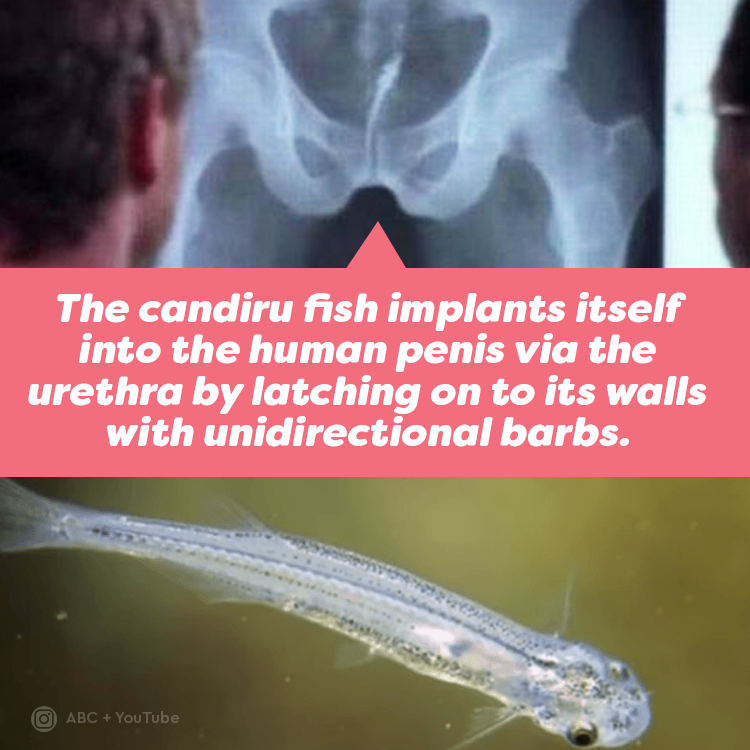The Amazon Basin is home to the candiru , also known as toothpick fish, or vampire fish. This parasitic freshwater catfish belongs to the Trichomycteridae family and is native to Bolivia, Brazil, Colombia, Ecuador, and Peru. The candiru is is believed to enjoy swimming into male penises.
Few animals roam the Amazon region like the candiru, which is one of the most terrifying. The small candiru, a parasite freshwater catfish that is more despised than the infamous piranha, is said to wait for its unsuspecting prey to enter the river before attacking, inflicting pain in the most agonizing manner imaginable.
It’s only about an inch and a half long, but don’t let that fool you into thinking it’s feeble. In fact, scary tales from the area claim that the candiru frequently swims right up inside unwary swimmers’ and fishermen’s urethras and then refuses to go.
It grips on to the inner walls of the urethra with the barbs. Because the barbs only point in one direction and pushing on the fish simply forces them to embed themselves farther into the urethral walls, removal can be quite challenging.
The majority of Indigenous people from the Amazon recommend total amputation of the “offending appendage” completely, with a few suggesting home cures like a hot bath or a herbal soak.
The first record of candirus dates back to 1829, when Indigenous Amazonians told German naturalist C.F.P. von Martius about them. They spoke about covering their groins with special coconut shell covers or, on occasion, just tying a ligature around their penises when close or in the water.
Evidence Of Candiru Attacks
In 1997, in Itacoatiara, Brazil, one of the rare recorded instances of a candiru fish swimming into a urethra is said to have occurred. The patient, a 23-year-old guy, said that as he was urinating in a river a candiru leaped from the water into his urethra. The fish had to be removed in a torturous, two-hour urological surgery.
Ironically, some of the remaining documented incidents purportedly featured women rather than men and reportedly occurred all the way back in the 19th century.
Many marine biologists have asserted that the candiru is nothing more than a myth because of its enigmatic character and the absence of any eyewitness accounts of an attack. The fish’s diminutive size and comparative lack of self-propulsion are cited as reasons why it could never hope to swim up the urethra.

However, the spread of candiru stories has not been stopped. Even the 1997 horror film Anaconda featured the small menace of the Amazon, with actors receiving ominous warnings about the fish that invades men’s penises.
And the Amazonians continue to insist that the candiru should not be underestimated. Perhaps it’s possible that they are still out there, waiting for their next unsuspecting victim, even though no one has seen one in action.
